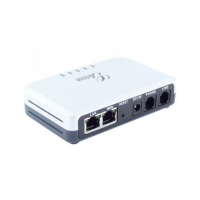header uses the transferred target’s contact header information.
Remove OBP from
Route Header
Default is No. If set to Yes, the Outbound Proxy will be removed from the
route header.
Default is Yes. If set to Yes, the contact header in REGISTER request will
contain SIP Instance ID as defined in IETF SIP Outbound draft.
Validate incoming
message
Default is No. If set to yes all incoming SIP messages will be strictly
validated according to RFC rules. If message will not pass validation
process, call will be rejected.
Check SIP User ID for
incoming INVITE
Default is No. Check the incoming SIP User ID in Request URI. If they don’t
match, the call will be rejected. If this option is enabled, the device will not
be able to make direct IP calls.
Authenticate Server
Certificate Domain
Sets the phone system to check the domain certificates if TLS/TCP is used
for SIP
Transport. The default setting is "No".
Authenticate Server
Certificate Chain
Configures whether to validate certification chain, when TLS/TCP is
configured for
SIP Transport. If this is set to “Yes”, phone will validate server against the new
certificate list. The default setting is “No”.
Uses the certificate for Authentication if “Check Domain Certificates” is set to
“Yes”
T1 is an estimate of the round-trip time between the client and server
transactions.
If the network latency is high, select larger value for reliable usage.
Maximum retransmission interval for non-INVITE requests and INVITE
responses.
Set the SIP Timer D. Default is 0.
Preferred DTMF
method (in listed
order)
The HT503 supports up to 3 different DTMF methods including in-audio, via
RTP (RFC2833) and via Sip Info. User can configure DTMF method in a
priority list.
DTMF-RELAY Tag
Respect SIP INFO
Default value is No. If it's YES, the dtmf-relay tag in Accept Header respects
if SIP INFO is chosen in Preferred DTMF.
Default is No. If set to yes, use above DTMF order without negotiation

